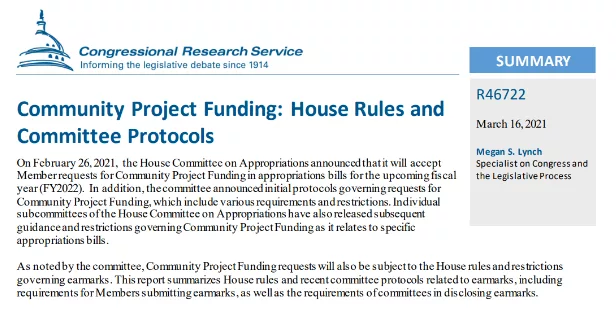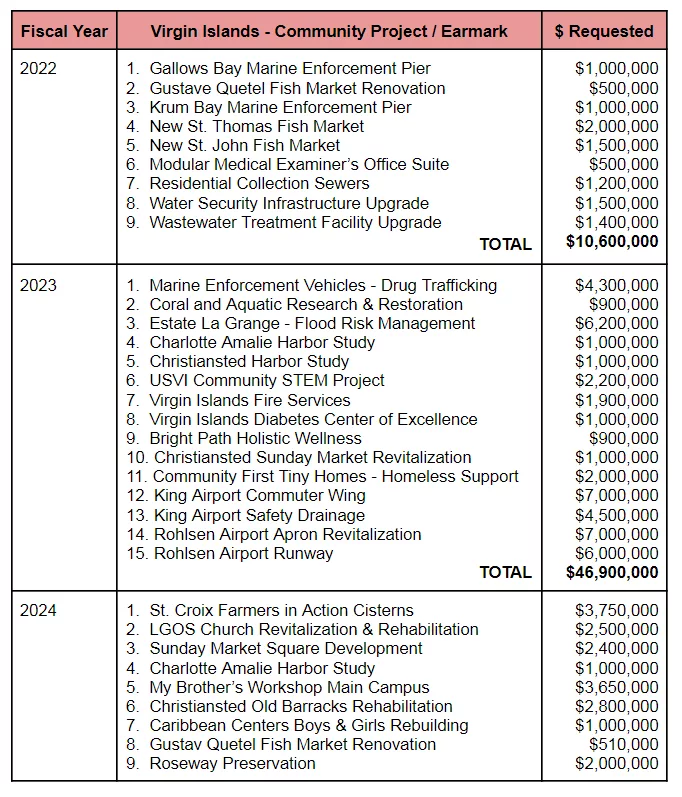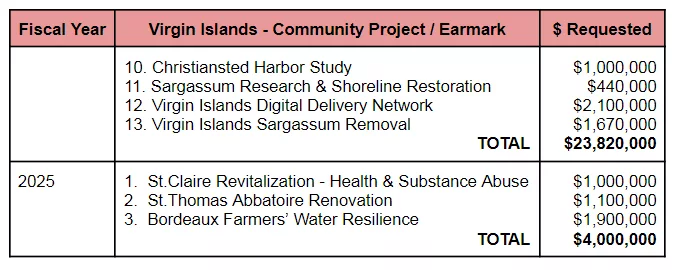
Dear Editor,
Last week, KHJ posted “A Congressional Report Card?” which many people reacted to and shared. Following that letter to the editor, another concerned constituent wrote
“Congresswoman Amata’s Effective Record in Congress,” which more people have reacted to. It is great to see civil public discourse spreading about our representation in Congress.
I’m grateful for the opportunity to share transparency tools, public records, and data with our people. I sincerely hope that it helps more of our people make informed decisions as to their future representation in Congress.
There is so much to fact check but let’s start with one statement from the Congresswoman’s Effective Record in Congress. The author wrote, “In Fiscal Year 2025, American Samoa punched above our weight in congressional earmarks, getting $1.5 million ($1 million for the airport and $500,000 for the ports).”
For those who may be unsure, “congressional earmarks” is another way of saying “community project funding.” It’s important for voters to understand that the status of those FY2025 earmarks referenced above – are still pending in Congress. They were approved by the House Appropriations Committee, but they have yet to be approved by the Senate.
We hope the Senate approves those earmarks and we are grateful our congresswoman requested those funds for our people. But, to say that American Samoa is “getting $1.5 million in congressional earmarks,” at this point in time, is misinformation.
Voters should know that the FY2025 House approved earmarks have the following totals for community projects in the US territories:
- American Samoa (Uifaatali Amata Radewagen) $1,500,000
- Virgin Islands (Stacey Plaskett) $2,426,000
- Puerto Rico (Jennifer Gonzalez) $10,028,000
- C. Northern Mariana Islands (Gregorio Sablan) $14,808,000
- Guam (Moylan / San Nicolas) $22,502,830
If the statement “punching above our weight” was meant to suggest that American Samoa is outperforming the other US territories – that is untrue. The data shows that American Samoa had the smallest total of FY2025 earmarks across all territories.
If “punching above our weight” was meant to suggest that in FY2025 American Samoa will have outperformed its previous years’ congressional earmarks – that is true. Transparency reports from the House Appropriations Committee show that zero federal dollars were earmarked for community projects in American Samoa the past three years (see links below).
For convenience and transparency, the following table of congressional data was organized to show voters the earmarks for community projects across the US territories FY2022 – FY2025.

The data shows that over the past three years, Congress approved more than $137,000,000 in earmarks for community projects across the territories. The obvious question from voters is why did American Samoa not receive any of those federal dollars?
According to a Congressional Research Service Report (see CRSR snippet below), the House Appropriations Committee notified all members of the House in February 2021 that “it will accept Member requests for Community Project Funding in appropriations bills for the upcoming fiscal year (FY2022).”

It’s important for voters to understand that congressional earmarks or community project funding had been suspended for the 10 years prior, but were reinstated in 2021.
According to the CRSR, Congress’s transparency rules require members of Congress to, “post all requests online, presumably on the member’s website.”
If voters go to the website of American Samoa’s representative, they will find four community project funding requests for FY2025, but none for FY2024, FY2023, and FY2022 (links below).
The House Appropriations Committee’s Consolidated Tables confirm that funding requests for American Samoa were only submitted for FY2025 (see links below).
In contrast, if voters search the Consolidated Tables, they will see funding requests from the representatives of the other US territories – year after year – since congressional earmarks were reinstated.
Based on the data, congressional records, and other public information, the statement that, “American Samoa punched above our weight in congressional earmarks” is not only untrue; it is misinformation of epic proportions.

If the Senate approves all of the House’s FY2025 earmarks, Congress will have awarded to the US territories more than $188,000,000 in community project funding; however, American Samoa will receive less than 1% of those funds.
Furthermore, according to the data, American Samoa did not begin punching for congressional earmarks until three years after Congress reinstated them.
We are grateful that American Samoa may be able to receive $1,000,000 for improvements to our airport, and $500,000 for our ports in FY2025. Nonetheless, voters should question the huge disparity. Why do the other territories receive so much and American Samoa so little?
The CRSR in 2021 clearly stated House Appropriations Committee rules, which informed each representative that he/she could submit a maximum of 10 community project funding requests for FY2022. For FY2023, FY2024 and FY2025, the Committee notified all representatives that they could submit up to 15 community project funding requests, each year.
In light of all the needs across our community, why did the incumbent’s office only submit 4 funding requests for American Samoa? Especially when we had the opportunity to submit up to 55 funding requests. Why did the incumbent not submit any funding requests until 5 months ago (see pdf links below)?
These are all important questions for voters as they consider their future representation in Congress. As voters ask themselves these questions, it may be helpful to see the community project funding requests that were submitted by representatives from other territories (see links below). Seeing their extensive work enables voters to compare and contrast further our representative’s work, and to see what could have been done for our people.
For convenience, the table below shows the community project funding requests of the Virgin Islands representative since congressional earmarks were reinstated.


Looking at the funding requests by the Virgin Islands representative, do American Samoa voters see any community projects that could have benefited our islands? Looking at the comparison table below, what do voters think of the work that’s been done in Congress for our islands? Specifically for funding/earmarks that could address the many needs in our community?

Constituents are encouraged to perform actual comparisons with other territories/representatives using the data and transparency tools provided by Congress. Doing so will help separate fact from fiction. The head to head comparison below between American Samoa’s representative and the Virgin islands’ representative gives a concise view of their individual efforts for congressional earmarks.

Why was the Virgin Islands chosen for this comparison? Because their representative is in the same “weight” class so to speak with American Samoa’s representative. Both were elected in 2014, and have the same number of years of service and relative seniority in Congress.
If voters were to conduct similar head to head comparisons with representatives from the other territories, e.g. with CNMI (which has a similar population size to American Samoa) voters will see that American Samoa has been outpunched year after year by the other territories since congressional earmarks were reinstated.
I have listed below all of the links to the data, congressional records, and public information used to fact check the statement in question. The people of American Samoa are encouraged to check the facts concerning our representation in Congress before deciding whether you should reelect the incumbent or elect new leadership.
If you feel this information is valuable, please share it with your family and friends.
Respectfully,
Ken Kuaea
- https://crsreports.congress.gov/product/pdf/R/R46722
- https://appropriations.house.gov/committee-activity/fy25-community-project-funding
- https://appropriations.house.gov/fiscal-year-2024-community-project-funding
- https://appropriations.house.gov/member-requests/fy23-community-project-funding
- https://appropriations.house.gov/member-requests/fy22-community-project-funding
- https://democrats-appropriations.house.gov/transparency/fiscal-year-2022
- https://democrats-appropriations.house.gov/transparency/fiscal-year-2023
- https://radewagen.house.gov/services/community-project-funding-submissions
- https://radewagen.house.gov/community-project-funding-submissions
- https://radewagen.house.gov/sites/evo-subsites/radewagen.house.gov/files/evo-media-document/THUD%20PPG%20Financial%20Disclosure%20and%20Nexus.pdf
- https://radewagen.house.gov/sites/evo-subsites/radewagen.house.gov/files/evo-media-document/THUD%20Pago%20Pago%20Harbor%20Financial%20Disclosure%20and%20Nexus.pdf
- https://radewagen.house.gov/sites/evo-subsites/radewagen.house.gov/files/evo-media-document/THUD%20Mountain%20Road%20Financial%20Disclosure%20and%20Nexus.pdf
- https://moylan.house.gov/issues/community-project-funding-requests
- https://gonzalez-colon.house.gov/community-project-funding-requests-0
- https://sablan.house.gov/community-project-funding
- https://plaskett.house.gov/constituent-services/fy-25-community-project-funding-requests.htm
- https://plaskett.house.gov/constituent-services/fy-24-appropriations.htm
- https://plaskett.house.gov/constituent-services/fy-23-appropriations.htm
- https://plaskett.house.gov/constituent-services/appropriations.htm




